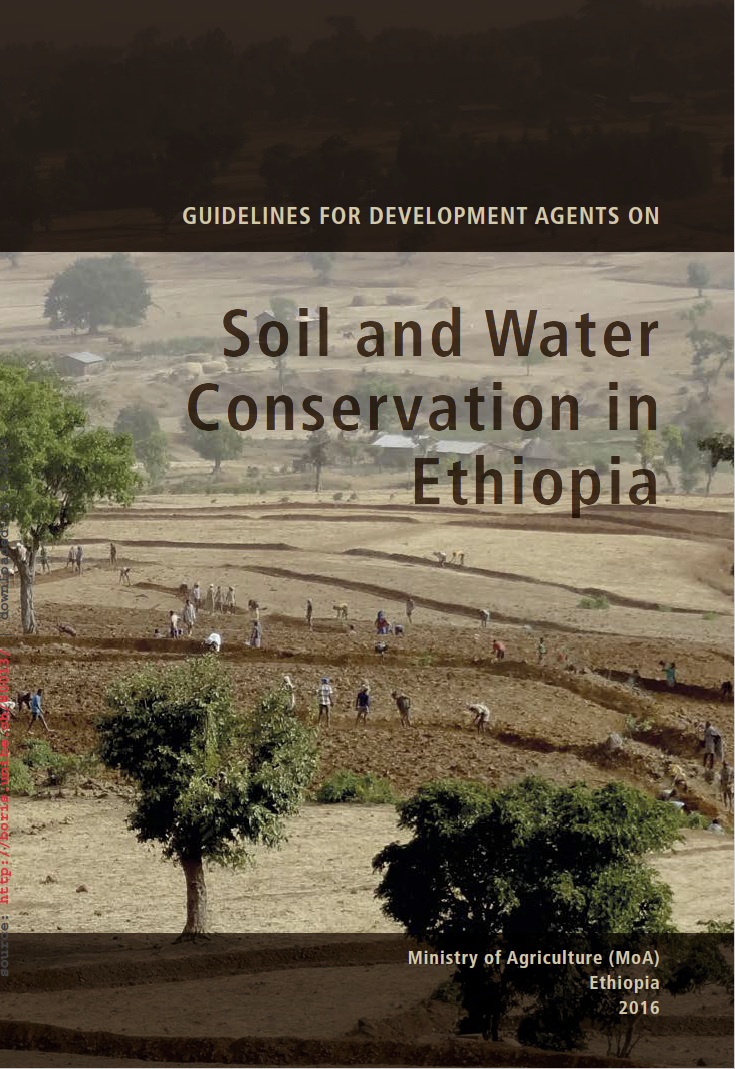Guidelines for Development Agents on Soil and Water Conservation in Ethiopia
Hurni H, Berhe WA, Chadhokar P, Daniel D, Gete Z, Grunder M, Kassaye G (2016)
Traditional conservation measures are well-known in some parts of Ethiopia. For example, the people of Konso applied terracing on their cultivated land long ago. Some terraces can also be seen in the northern regions and in lowland areas where water conservation is necessary. Other areas like Gojam have developed systems of ditches to drain surplus runoff. These measures, however, are not sufficient to control soil erosion.
Soil and water conservation activities have been carried out by the Ministry of Agriculture in the past forty years on a large scale on cultivated land with contour (level) bunds, on hillsides with afforestation terraces, and on degraded hills with hillside closures. However, much more will have to be done in the future. Sustainable development can be achieved in rural areas of Ethiopia if farmers are supported at all levels – from policy to programmes, from extension to NGOs, and from international cooperation to private partnerships – in their efforts to conserve nature, use natural resources with afforestation wisely, and engage in soil and water conservation.
Since Ethiopia has great climatic variety, from dry to wet, and also many different altitudes, from lowlands to highlands, the same conservation technologies cannot be applied everywhere. Therefore, it is necessary to know the characteristics of an area where soil and water conservation is to be implemented. Cultivated land requires conservation measures different from those required on grassland. Forests, in turn, require other measures.
Soil and water conservation activities have been carried out by the Ministry of Agriculture in the past forty years on a large scale on cultivated land with contour (level) bunds, on hillsides with afforestation terraces, and on degraded hills with hillside closures. However, much more will have to be done in the future. Sustainable development can be achieved in rural areas of Ethiopia if farmers are supported at all levels – from policy to programmes, from extension to NGOs, and from international cooperation to private partnerships – in their efforts to conserve nature, use natural resources with afforestation wisely, and engage in soil and water conservation.
Since Ethiopia has great climatic variety, from dry to wet, and also many different altitudes, from lowlands to highlands, the same conservation technologies cannot be applied everywhere. Therefore, it is necessary to know the characteristics of an area where soil and water conservation is to be implemented. Cultivated land requires conservation measures different from those required on grassland. Forests, in turn, require other measures.
This book tells you the measures that are considered best for the different local conditions in Ethiopia.
Publication
